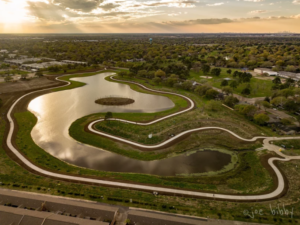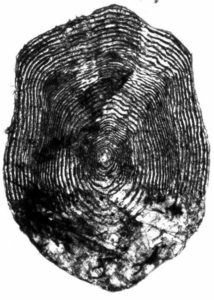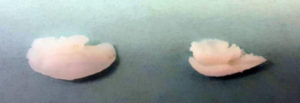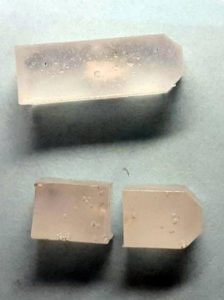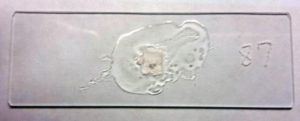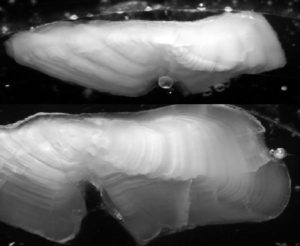Top River Trips on America’s Public Waters
From the U.S. Department of the Interior
from The Fishing Wire
Looking to hit the water? We’ve got you covered.
With approximately 3.6 million miles of streams — including 12,734 miles of Wild and Scenic Rivers — the United States has some incredible stretches of water. They’re the perfect place for a quiet float trip, a heart-pumping whitewater adventure or the chance to catch a big one.
Whether it’s a day trip or overnight, below are some of the best river trips on America’s public waters to help you get started in your search for the perfect river adventure. Flow levels, weather and other factors can change the level of skill required to ply the waters or any other river segment. Check local conditions before venturing out. And for those who are unsure of their skills or who want to relax and let others do the planning, professional outfitters offer guided trips on many rivers.
So fasten your life jackets, grab your paddle and #FindYourWay on one of these awesome river trips!
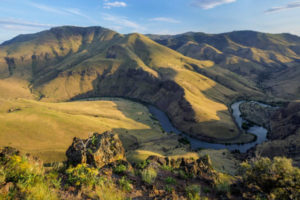
Deschutes Wild and Scenic River
Deschutes Wild and Scenic River in Oregon
Type of river trip: Whitewater
Trip length: Day trip
Photo by Bob Wick, Bureau of Land Management.
Located in central Oregon, the Deschutes Wild and Scenic River is a playground for outdoor recreation and a great place for your next whitewater trip. Thousands of people visit each year to enjoy its exciting whitewater, beautiful scenery and incredible fishing. The river offers a variety of opportunities for both day and overnight trips. A trip on the river will take you through a rimrock-lined canyon that ranges from 900-2,600 feet in depth. Within this canyon, you will experience an incredible geologic and cultural history, and a diverse community of fish, wildlife and vegetation. Be sure to add it to your bucket list today!

Beartrap Canyon Madison River
Beartrap Canyon Madison River in Montana
Type of river trip: Fishing-boating combo
Trip length: Day trip
Photo by Bob Wick, Bureau of Land Management.
One of four sections that make up Montana’s Lee Metcalf Wilderness, Bear Trap Canyon Wilderness is an ideal spot for a fishing and boating trip. The 6,347-acre area offers beautiful wilderness scenery — plus exciting whitewater rafting featuring the famous Class IV – V “Kitchen Sink” rapid. The Madison River is one of Montana’s most coveted fly-fishing destinations, as it’s one of the most productive streams in Montana for brown trout, rainbow trout and mountain whitefish. As you travel the river and cast your line, be sure to look up. The 1,500-foot cliffs that border the canyon provide a breathtaking backdrop.
Lab?y?r?i?nth Canyon on the lower Green River in Utah
Type of river trip: Flatwater
Trip length: Overnight
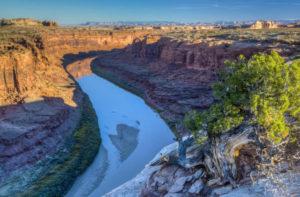
Labyrinth Canyon
Photo by Bureau of Land Management.
For a great flatwater trip, head to Labyrinth Canyon on the lower Green River. An easy stretch suitable for canoes kayaks and rafts of all types, Labyrinth Canyon can be enjoyed spring through fall with the most popular times between Easter and Labor Day. Here, you’ll float through Utah’s red-rock canyons, tracing the path of Major John Wesley Powell through 44 miles of this calm and scenic portion of the Green River. The Lab?y?r?i?nth Canyon section is perfect for a two-night trip, and if you want to float the longer stretch from Green River to Mineral Bottom, you can spend four days or more on the river. Word of warning: The area is remote and services and cell phone service are non-existent. You must be self-contained and self-reliant to deal with emergencies and plan to carry all your drinking water. And be sure to get a permit.
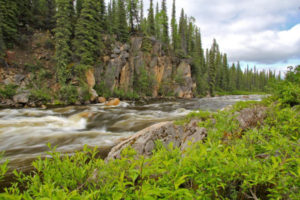
Gulkana Wild and Scenic River in Alaska
Type of river trip: Whitewater
Trip length: 3-day weekend
Photo by Jeremy Matlock, Bureau of Land Management.
Closely flanked by low, rolling hills with the Wrangell Mountains and Alaska Range in the background, the Gulkana Wild and Scenic River is perfect for those who are ready for an adventure. One of 208 river segments of the Wild and Scenic River system, the Gulkana offers excellent three to four day float trips through meandering waters with numerous riffles, and a short stretch of Class III rapids with convenient put-in and take out points at each end accessed from Alaska’s Richardson Highway. It is also one of the most popular sport fishing rivers in the state, providing rich habitat for rainbow trout, king and red salmon, and more. Along the way on your trip, you’ll see stunning views and a wide range of wildlife. There are more than 33 species of mammals and 59 species of birds known to live in the Gulkana River basin. Although by Alaska standards, this river offers convenient access, it flows through roadless areas and visitors must be self-reliant.
Gunnison Gorge on the Gunnison River in Colorado
Type of river trip: Fishing-boating combo
Trip length: Overnight

Gunnison Gorge
Photo by Bob Wick, Bureau of Land Management.
Just north of Montrose in west-central Colorado lies the Gunnison Gorge National Conservation Area, a diverse landscape ranging from adobe badlands to rugged pinyon and juniper-covered slopes. At the heart of it is the Gunnison Gorge Wilderness Area with a spectacular black granite and red sandstone double canyon formed by the crystal-clear waters of the Gunnison River. Anglers come for the gold-medal trout waters, while skilled rafters, kayakers and whitewater canoeists come for a true wilderness whitewater float through the 3,000 foot deep canyon. Every float begins with a mile-long hike into the gorge. Outfitters offer guide and packing services.
Delaware Wild and Scenic River in Pennsylvania and New Jersey
Type of river trip: Flatwater with riffles
Trip length: Day trip
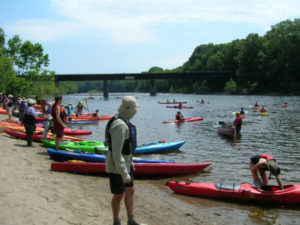
Delaware Wild and Scenic River
Photo by Julia Bell, National Park Service.
Flowing along the Pennsylvania and New Jersey border, the Delaware Wild and Scenic River is a spectacular spot for a day-long kayaking or canoeing trip with options to extend to an overnight trip. Divided in three sections (the Upper, Middle and Lower Delaware), the river takes you along a tour of the region’s diverse habitats and history. Sheer cliffs rise 400 feet above the river with a desert-like ecosystem on the southern-facing side and flora and fauna usually found only in arctic-alpine climates on north-facing cliffs. From an historic viewpoint, the river is one of the most significant corridors in the nation. The corridor contains buildings used during Washington’s famous crossing, historic navigation canals, Native American and colonial era archaeological sites and mills.
North Fork of the American River in California
Type of river trip: Whitewater
Trip length: Overnight trip
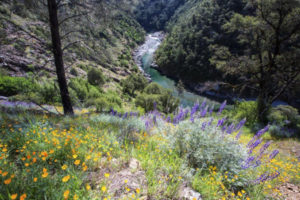
North Fork
Photo by Bob Wick, Bureau of Land Management
Arguably the most challenging and spectacular fork of the American is the North Fork, with its emerald green waters and huge granite boulders. Best known for its thrilling class IV and V whitewater, it was designated as one of the nation’s Wild and Scenic Rivers. This awe-inspiring river canyon offers a remote exhilarating experience for those up to the challenge. Hikers and fishing enthusiasts can choose from a number of trails to access the river canyon, most of them dropping steeply from the canyon rim down to the water. Bring your gold pan and you are likely to find some color. Walls tower 2,000-4,000 feet above the river, creating a majestic backdrop for cascading waterfalls, brightly colored wildflowers and the bright, clear water of the river itself. Looking for a more sublime experience? Head downstream where the American softens to a lazy stretch through an urban greenway — you won’t believe you are within the city limits of Sacramento as anglers cast for trout and salmon along cottonwood lined banks — or head up to the South Fork with its easy-access moderate rapids. This California gem truly offers something for everyone looking for an overnight trip.
North Platte River in Wyoming
Type of river trip: Fishing-boating combo
Trip length: Day trip
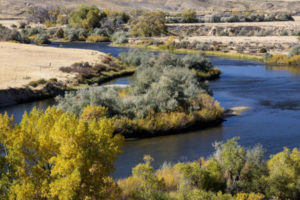
North Platte Rive
Photo by Bob Wick, Bureau of Land Management.
Mention Wyoming’s North Platte River to someone who’s fished there, and you’re guaranteed to get an earful of tales of the big browns, rainbows and cutthroats that they have fought on this legendary Wyoming stream. Even though they might not share their secret spots, this river offers plenty of public access points to the best fishing segments. The aptly named Miracle Mile and Grey Reef are just two popular segments — drift boats and shore anglers can both enjoy its waters. The numerous boat launches allow for a variety of trip lengths ranging from an hour or two to the entire day. The popular Bessemer Bend Recreation Site offers fishing, picnicking and interpretive displays discussing the significance of the site as a major crossing for the California, Oregon and Mormon Pioneer National Historic trails. Several public campgrounds are located along the corridor. The North Platte is a true gem of central Wyoming, and a top destination in the state for a fishing and boating trip.
Chattooga Wild and Scenic River in North Carolina, South Carolina and Georgia
Type of river trip: Whitewater
Trip length: Day trip

Chattooga Wild and Scenic River
Photo courtesy of Tim Palmer.
Flowing through three states and the Ellicott Rock Wilderness, the Chattooga is recognized as one of the Southeast’s premier whitewater rivers. It begins in mountainous North Carolina as small rivulets, nourished by springs and abundant rainfall. High on the slopes of the Appalachian Mountains is the start of a 50-mile journey that ends at Lake Tugaloo between South Carolina and Georgia, dropping almost 1/2-mile in elevation. The Chattooga offers outstanding scenery, ranging from thundering falls and twisting rock-choked channels to narrow, cliff-enclosed deep pools. The setting is primitive — dense forests and undeveloped shorelines characterize the primitive nature of the area — so travelers have to rely on their own skills and strength.
Check out more awesome river trips on America’s Wild and Scenic Rivers.
